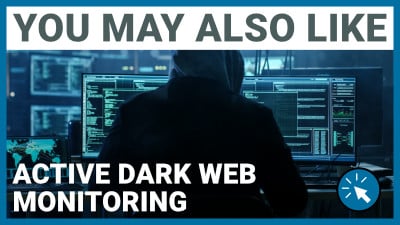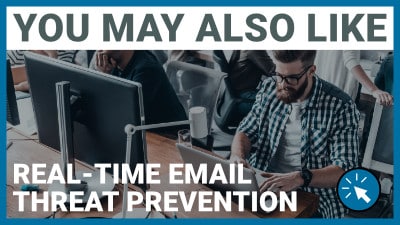
Software
Do you have redundancy in place for your business data?
Backup isn’t planning for the worst. It’s planning.
Redundancy, backup, disaster recovery, call it what you will. None of us like planning for when something goes wrong because it means we have to spend time thinking about how one of our worst working days might pan out. For businesses, it can also seem like an expenditure of time and money on something that might not happen.
But we have to grasp the nettle because it’s just good planning. Businesses plan and budget for business insurance, building security and fire safety without batting an eyelid, and the same should be true for data backup. Our businesses are increasingly reliant upon computer-based programs, documents and databases to run, and we have to be honest with ourselves about what the impact would be if we walked in to work one day and it had all just disappeared.
There are a whole number of reasons this might happen – storage failure, cyber attack, data centre fire – so we need to ensure that whatever the problem, we have a Plan B.
Lets’ take a look how to build redundancy into our crucial business data.
The 3-2-1 backup method.
The 3-2-1 backup method is a simple way to ensure you always have at least 3 copies of any given file:
1. A local copy. The one you’re most likely to work on day-to-day.
2. A backup copy on an external drive.
3. A backup copy stored remotely, such as cloud storage.
Many businesses that backup only do so once, which can have limitations. If you backup to the cloud and your internet connection goes down, you won’t be able to retrieve the copy. If you backup to an external drive stored locally, if you are hacked or suffer a fire, for instance, your backup copy is likely in danger too.
3-2-1 offers you a simple and easy to implement methodology with a high likelihood of retrieval.
Common backup types.
File and Folder Backup.
File and folder backup is just as the name suggests. You get to choose exactly which files and folders need backing up, when they will backed up and how long the backups will be stored for. This can be done either at a company level from a management dashboard, or each user can be enabled to set their own backups (or both). Often you will also be able to choose where the files are backed up to, such as your own networked storage or cloud storage account.
If you need a simple way to get started with backups, and keep control of costs, this is the simplest way. Providers like One2Call offer simple cloud-backup options whereby you simply pay for the amount of data stored, so if you only have a few vital files and folders that need backing up, this can prove very cost effective.
Full System backup.
While file and folder backup helps keep specific core documents safe, it is not as helpful when it comes to the loss of a device. If one of your key workers has their laptop stolen, but only has specific key files are backed up, it will still take them a long time to get up and running again on a new device. They will lose all their locally stored files and settings, not to mention all their installed software which will need to be reinstalled from scratch.
With full system backup (also known as System Image Backup or Bare Metal Backup) a snapshot is taken of the entire system; files, folders software and operating system and all their relevant settings. This means the whole device can be restored exactly as it was when the system image was taken, onto a new device.
Full system backup is best for critical business servers and virtual machines, and for the laptop and desktops of your most important key workers for whom every hour of lost work with have a significant impact on your business.
We can help:
Our All-In-One Backup Solution makes business-wide backups easy to set up, test and schedule.
Cloud-to-Cloud backup.
It can be easy to think that because your documents are stored in the cloud that they are safe and secure. Surely my cloud provider backs everything up by default, right? Well, maybe that’s something you should ask your cloud storage provider!
But let’s take for example one of the world’s leading business cloud solutions, Microsoft Office 365, Using the likes of Outlook, OneDrive and Sharepoint is an excellent way to ensure the high availability of your business documentation from any location or device. However, Microsoft Office 365 still has its limitations:
- You’re not protected from users accidentally deleting business-critical files.
- When a user account is deleted (when they leave the organisation, for instance) all the files they authored are also, eventually, deleted.
- Emails arent’ backed up by default.
- Teams conversations also aren’t backed up by default.
- If you can’t connect to the Microsoft cloud (either for local reasons or because of a Microsoft fault or outage) you can’t retrieve your files.
We can help:
Our Complete Backup for Office 365 gives you the backup tools Microsoft doesn’t, and across Teams, Outlook, OneDrive and Sharepoint too.
Backup as part of your cyber security.
Reduce the impact of a Ransomware attack.
Backup doesn’t just protect your business against losing your files through hardware loss or failure, or accidental deletion. It can also play a vital role in protecting your business from the effects of cyber crime.
During a Ransomware attack hackers take control of your devices, prevent you from gaining access, and then charge you money to regain access. With the average Ransomware ransom demand now at more than $12,000 and rising, and that doesn’t even take account of the cost from loss of business.
Instinctively we don’t want to pay the ransom, as this gives the criminals what they want, but if that’s the only way you can get your business back up and running, you don’t really have any choice.
And that’s where a good backup strategy comes in.
If the worst does occur and you’re locked out of your devices by a Ransomware attack, having good backups gives you options. You will still be able to access your important files from another device, reducing the loss of time and business. Importantly, it also buys you time to get your head together and decide what to do without (as much) pressure from loss of business.
Equally, when the ransom demand is issued, with a proper backup strategy you might make the decision to abandon the locked devices and just buy new ones. Since you have access to your most important files, or even full-system backups of your devices (where the whole laptop or PC is backed up, settings and all), this could be quicker, and cheaper, than paying the ransom. And, it stops the hackers gaining from their crimes.
We can help:
Why leave it to chance when you can have Ransomware Protection backed by a financial guarantee?
More resources:
I now understand…
- Why backups are important to my business.
- Common types of backup solution.
- The role backups can play in cyber security.
Also in Software:
- Are my online accounts protected, safe and secure?
- Do you have redundancy measures in place for your data?
- Are your business apps making your business vulnerable?

Also in Software:
- Are my online accounts protected, safe and secure?
- Do you have redundancy measures in place for your data?
- Are your business apps making your business vulnerable?

Request for your
Cyber Summmer FREEBIES
Contact Us
Testimonials
Paul D, AJ Marshall
Can contact support quickly, & visiting engineers communicative & polite/friendly.
Jane Furness, Barca Leeds
Very quick to respond to problem when reported- very helpful.
Greystones Medical
Professional people providing a professional service. Fully met our business needs and listened to our requirements. Responsive team and capable engineers.

